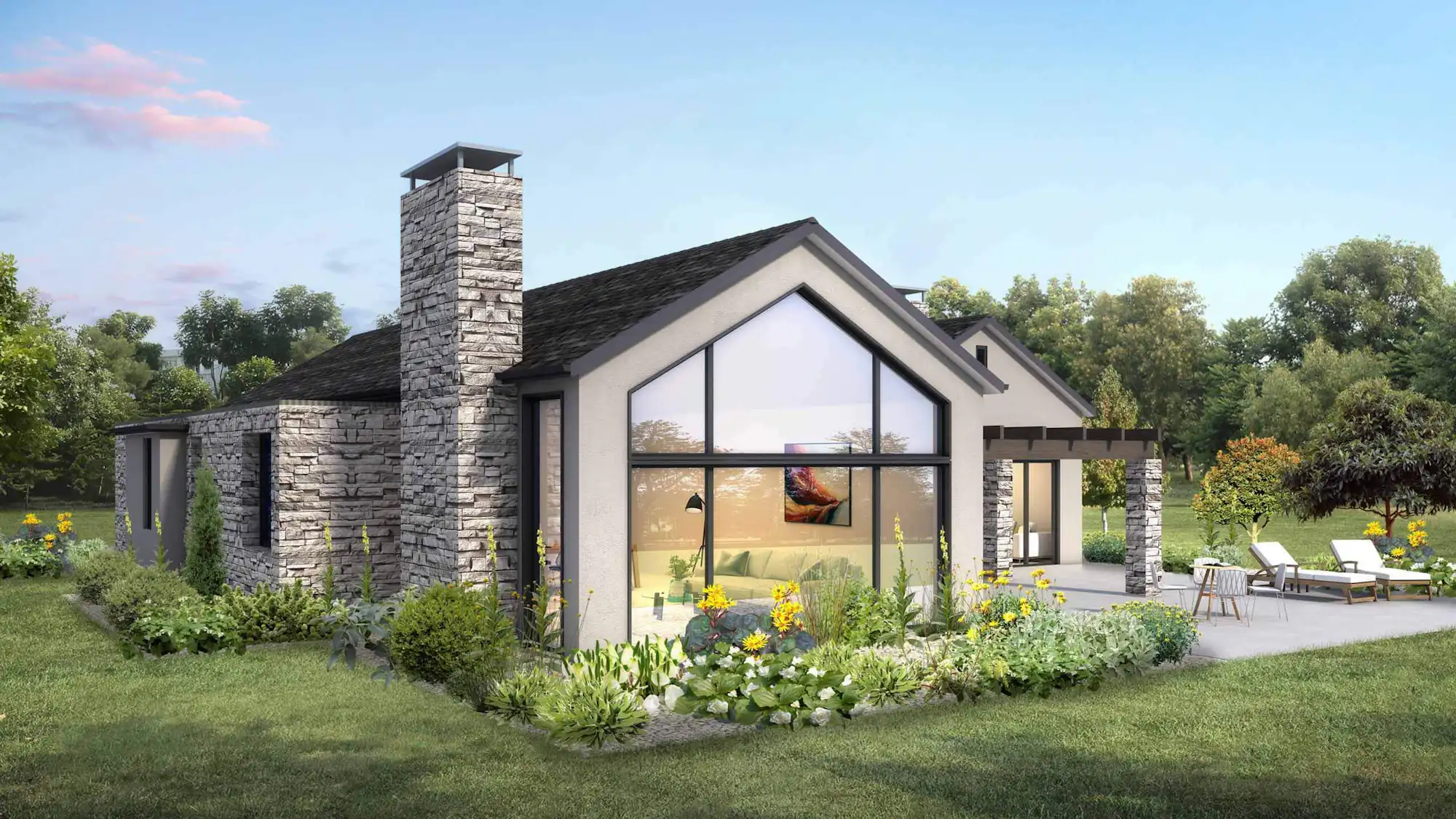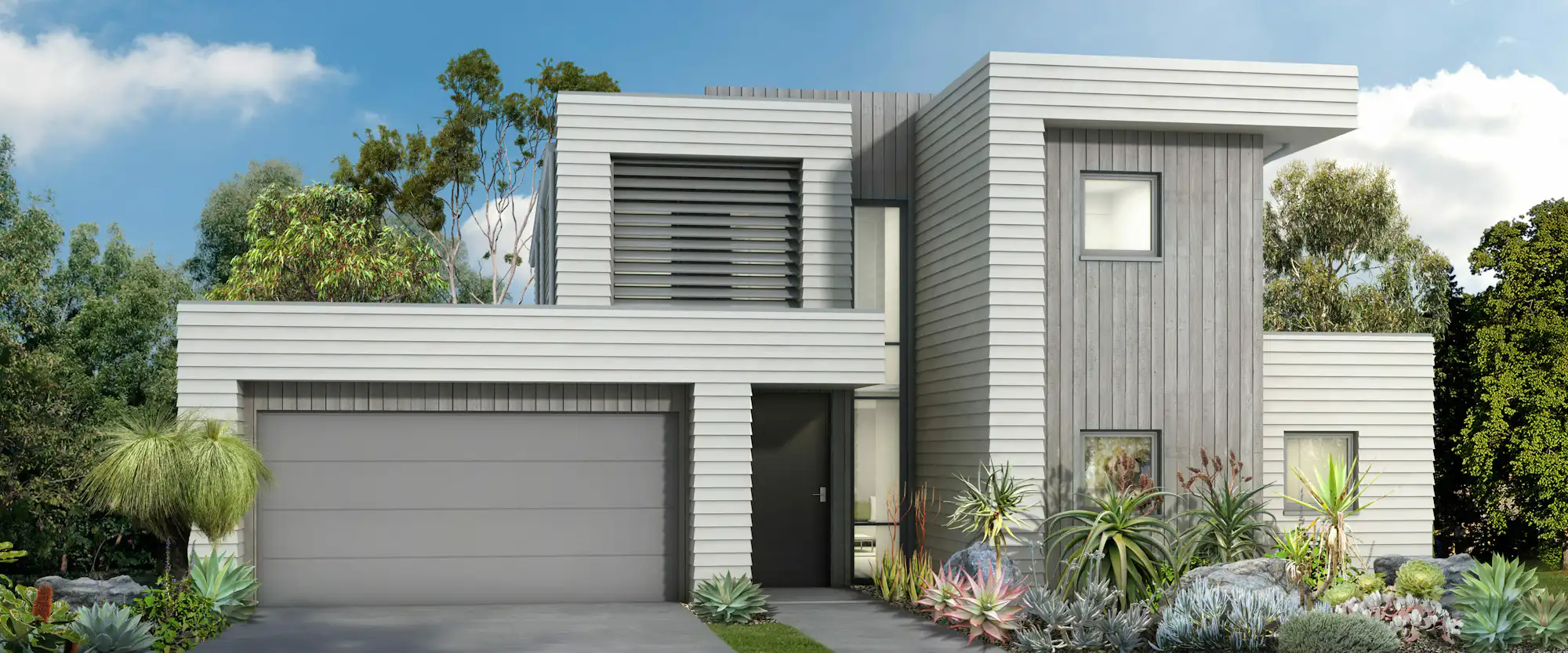Healthy Homes and sustainable design is in. Gone are the days of building with lead paint and asbestos. Current design trends are leaning towards being more environmentally responsible, eco-friendly and energy efficient.
How to Build an Energy Efficient Home
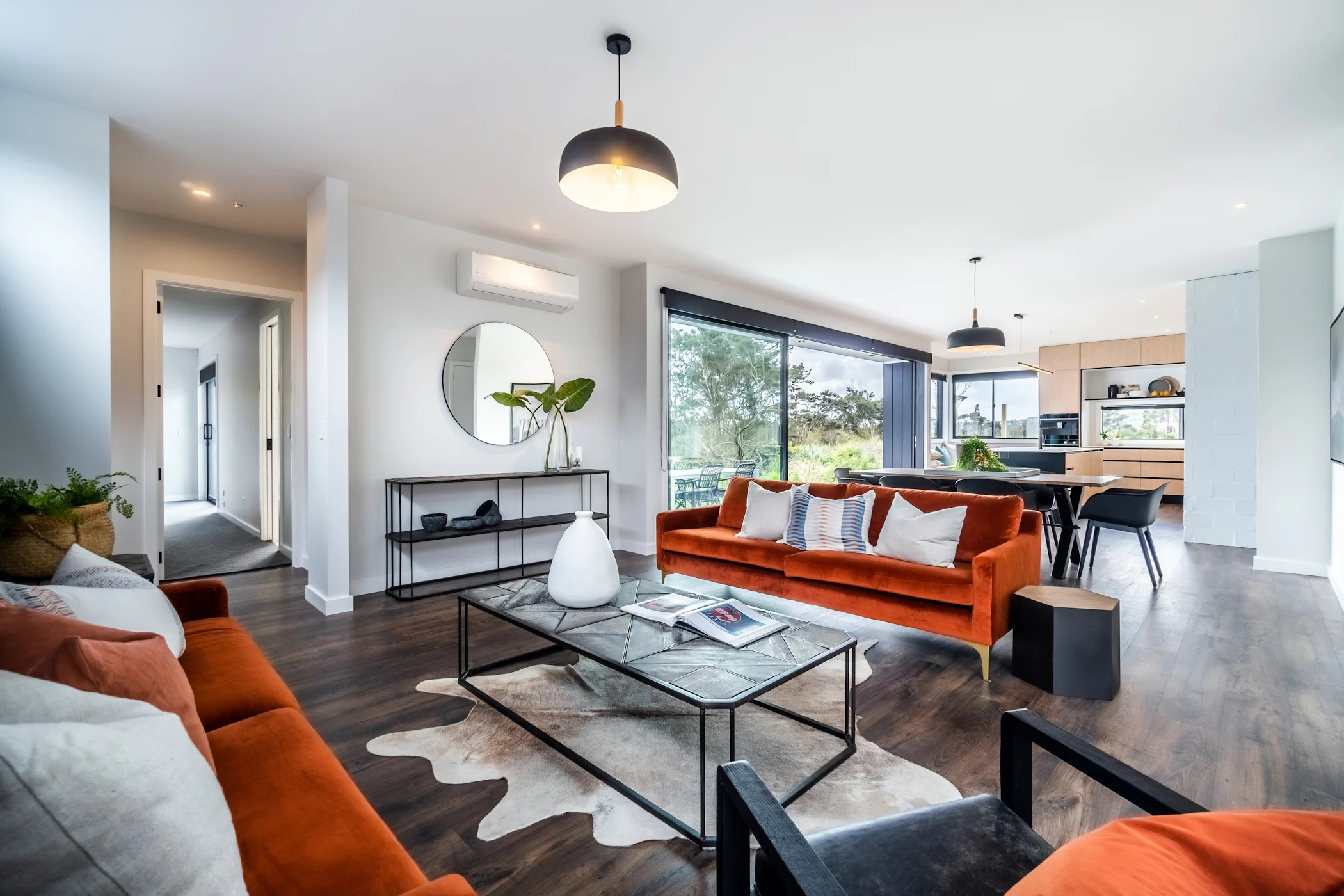
Some covenants now require new homes on subdivisions or sections to be built to a 6 or 7 Homestar rating. Some banks are even incentivising this kind of energy-efficient home build, offering lower rates on their loans and cashback’s for anyone building a 6 Homestar rated property.
What is the Homestar rating and how does it work?
The Homestar rating is the industry standard for sustainable homes in New Zealand. It’s based on the idea that you make your house more efficient if you do certain things. But it’s not just about energy efficiency. It’s also about being more comfortable and safer to live in.
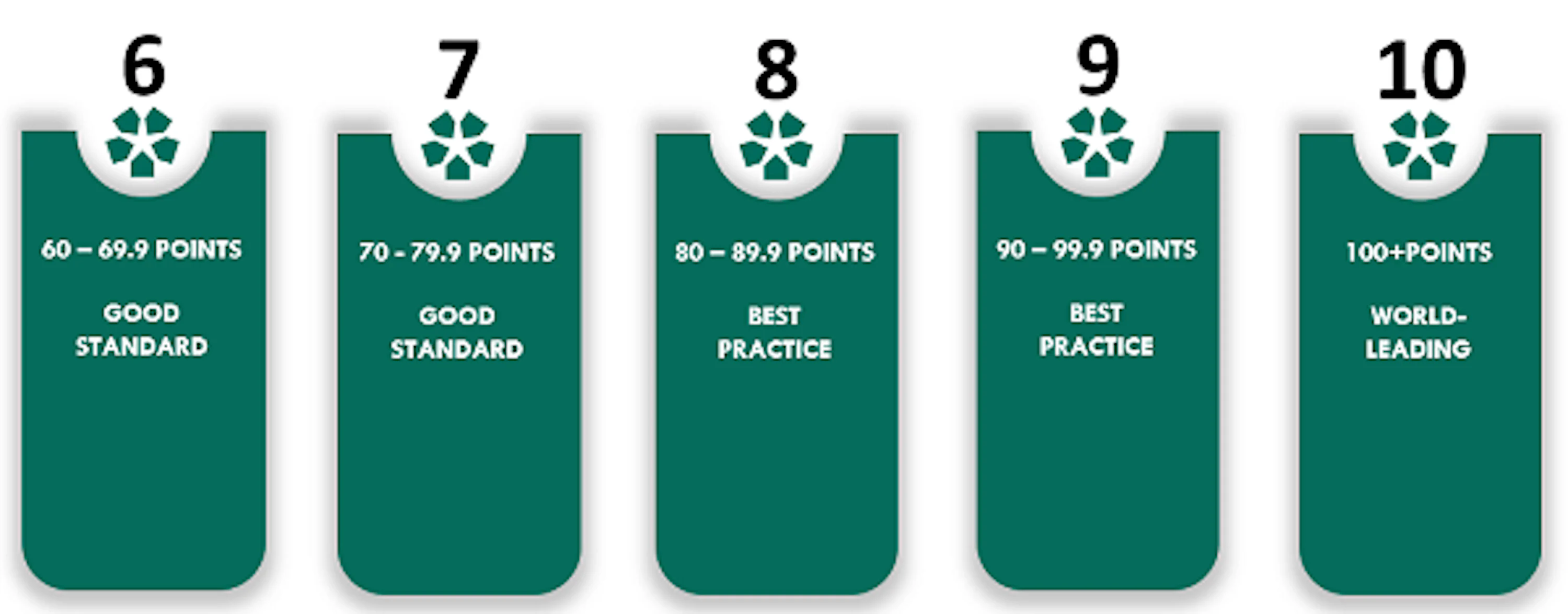
Figure 1: Source Homestar
The Landmark Homes North Shore & Rodney team are Homestar accredited. To achieve a Homestar 6 rating, you need to earn 60-69.9 points over a range of options, including (but not limited to)
- Size and design of windows – windows are a significant source of heat loss (and cause of over-heating), so you will need double glazing or more to improve insulation efficiency and make sure the ratio of window to wall is correct.
- Quality insulation– insulation reduces heat loss (and gain) and improves airtightness. This often includes slab edge insulation as this is another weak point.
- Sufficient ventilation – whether through a passive ventilation system or windows.
- Sustainable Materials– using ethically sourced, natural materials that are environmentally certified, such as low-VOC paints, sustainably sourced timber, and eco-labelled Colorsteel roofing.
- Hotwater – Heat pump hot water systems are a super energy-efficient option.
- Energy-Efficient Lighting– you must use LED lighting throughout, and you will need an electrician on site who can provide you with documentation to show you’ve met the energy use criteria.
- Low water flow rate– you must use water-efficient taps and fittings with good flow ratings, so you’re not wasting water.
- Landscaping– with food-producing plants
- Extractor fans– in the kitchen and bathrooms
“The onus is not just on the builder, but also the homeowner,” adds the Landmark team. “You can get points for having solar panels or a vegetable garden, for example, because they minimise your carbon footprint.”
The site orientation will also affect what will be needed to achieve a Homestar rating. Sometimes you have to trade a beautiful scenic view for an energy-efficient home or be prepared to spend extra to secure both.
“It will be much harder to achieve a Homestar rating if you had a fantastic view to the South and you wanted to put big windows in to maximise it. In that case, you might have to invest in thermally broken argon-filled glass or triple glazing to minimise heat loss,” the team explains.
Building a Homestar-rated home begins in the ‘design’ phase and continues through the build
Assessing and achieving a Homestar rating is complex and can only be done by a trained assessor.
And a big mistake people make is thinking you can achieve a Homestar 6+ rating retrospectively– crossing your fingers that you’ll meet the Standard after your build is completed. That is not the case! Instead, it has to be planned and assessed at the initial design phase.
If you want to achieve a Homestar 6 or 7 rating, it’s essential to design an energy-efficient house plan from the beginning, with a Homestar Designer or Assessor who knows the standards.
“Because you will need to achieve ‘points’ relating to features like the area of windows on each elevation, the amount of sun penetration, and the ventilation per room, (all of which require calculations and careful planning), – you need to address these items in the design phase as you can’t change them once the house is completed.”
There will be items like insulation that you cannot change easily once the build is complete, even the brand of insulation, so you need to get this right during the specification and then construction phase. Additional measures must also be taken around waste management – part of the Homestar assessment lies in minimising the construction waste sent to landfill and a Waste Management plan must be in place during the build.
All this needs to be documented by the assessor, being backed up by the plans, the specification and site photos both during and after the build.
What’s the cost of building an eco-friendly house?
Achieving a 6 Homestar rating is very doable, however, it does add time and potentially thousands of dollars to your build. The Homestar rating may also preclude you from using a cheaper product because it doesn’t have an eco-rating.
That’s probably why building a Homestar certified home is not for everyone.
We have people who ask about Homestar, especially with banks now incentivising,” says the team, “But once you go through what’s required, clients do say that it will cost too much. ”However, that’s not to say the team hasn’t built them.
A previous Showhome in Auckland was constructed to a 6 Homestar rating, and the Auckland team built three 7 Homestar rated homes in Matakana. One of those, with additional input from the owners, actually gained an 8 Homestar rating and also won a Silver Award in the Master Builders House of the Year Awards!
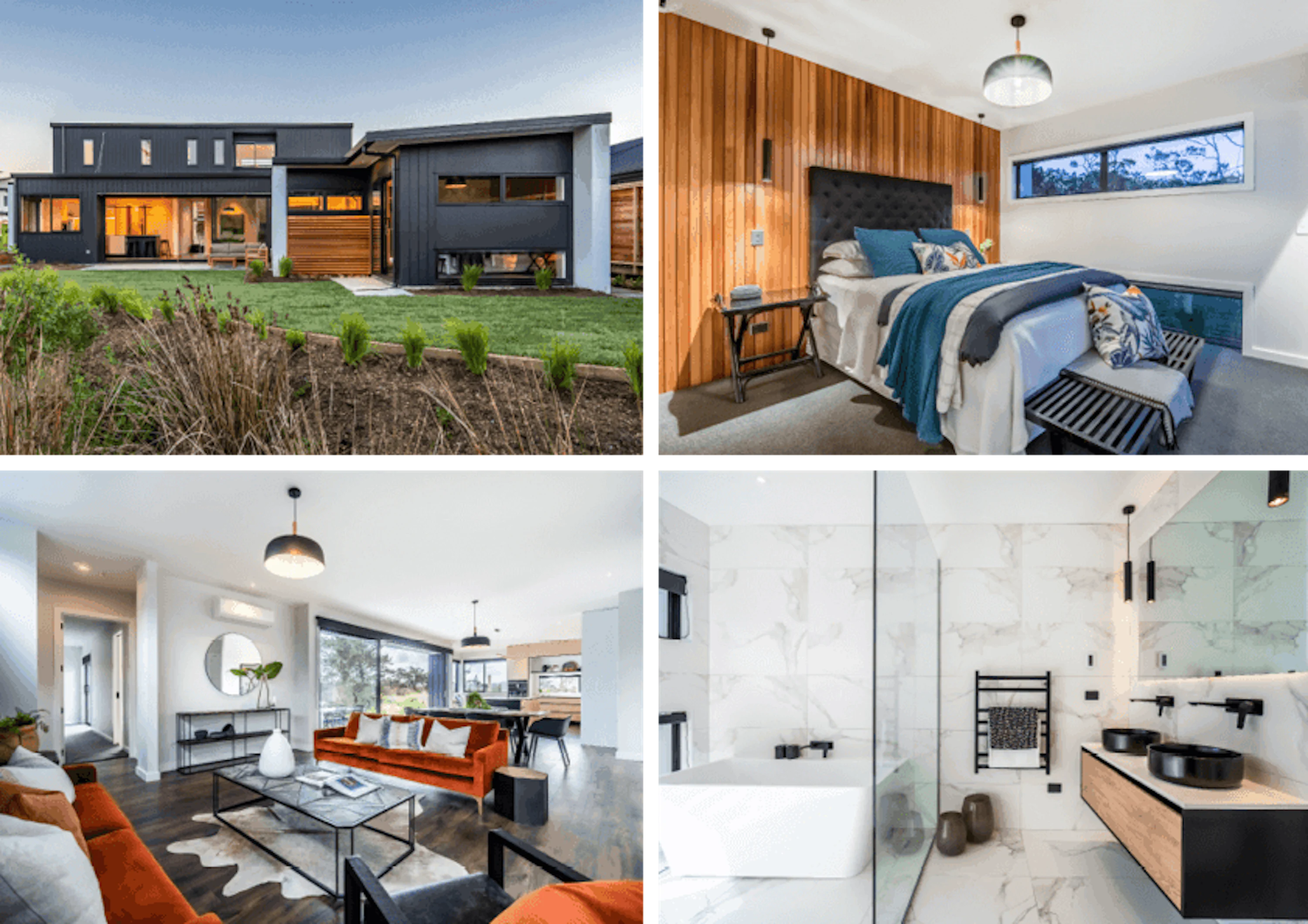
If the client’s budget allows, it is completely possible. The benefits are enticing too!
A 6 Homestar rated home will be easier to keep warm and healthy, will be more cost-efficient to run, and more environmentally-friendly than a home built to the current standards set by the New Zealand Building Code – which is more at an (imaginary) level 3-4 rating.
There’s a big difference between building a zero-energy home and an energy-efficient one, too. A passive house is essentially like a 10 Homestar home, which has no carbon footprint and takes no external energy to run. It’s completely self-sufficient. There are some passive houses in NZ but only one 10 Homestar.
Can’t stretch for a Homestar 6+ rating? You can still make a difference to your footprint
Every Landmark house design incorporates Homestar principles.
“The Homestar principles are great. So, when we design, we design to look at core elements like sun penetration, insulation, and windows to the south. We do key things in every build to go above and beyond New Zealand building standards where possible,” says the team.
As a minimum, Landmark recommends clients upgrade their insulation. Beyond that they can look at installing a hot water heat pump (“That saves about 60% of your heating costs!”), thermally broken windows and solar panels, however there is significantly more cost involved. But at the end of the day, it’s always about looking at the user and seeing what’s suitable for them, she says.
“For example, if you’re doing most of your energy consumption during the day, then solar panel payback is something like 6-8 years. But if you’re working outside the home during the day, and you’re using more power during the evenings, you will have a much longer payback period.”
Material choices come into play here too. The team always recommends using Resene low VOC (Volatile Organic Compounds) paints – a Homestar approved product.
The good news? “Whether it’s paint, concrete, or the boards you’re making your kitchen out of, there are many products that are up to eco standards – and a lot more ecolabels abound. It’s wonderful we have these tools to figure out how good or bad a product is for the environment (and ourselves),” says the team.
Related Articles

The Impact of Lighting on Your Home's Design and Mood
Jun 13, 2023 Inspiration 3 min read
An often-overlooked feature in interior design, lighting can make a room feel cosy and warm or a...
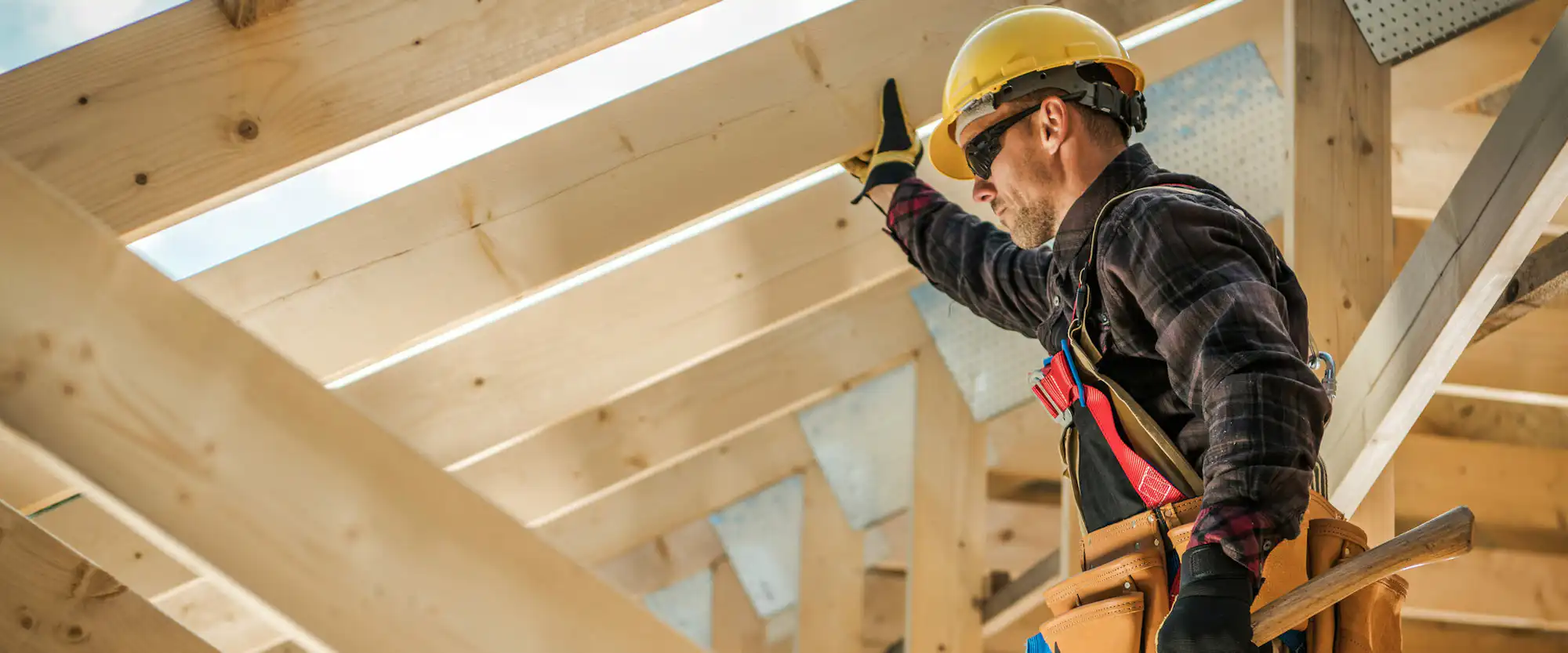
Why now is the best time to start your Landmark building journey!
Jun 12, 2023 Building Tips 4 min read
As we settle into 2023, with rising inflation it's not unexpected that many people are...
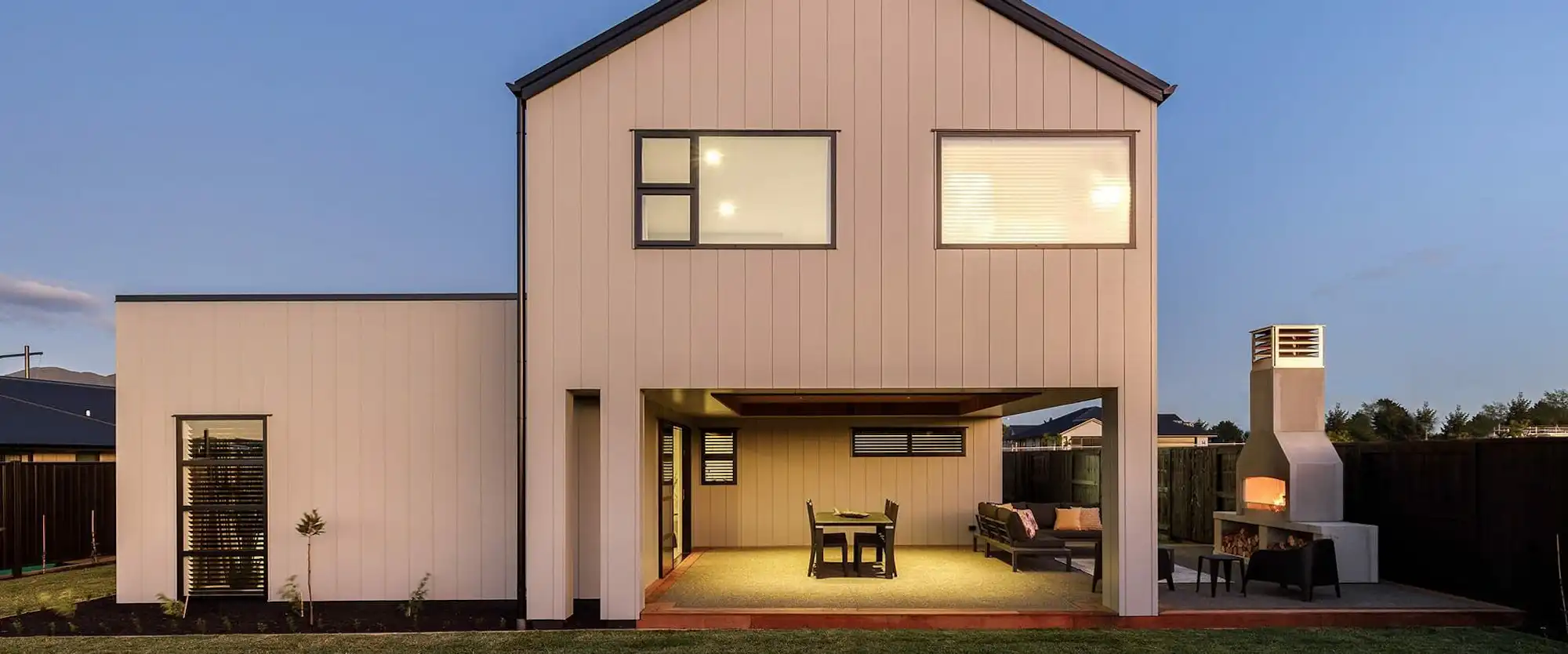
Alfresco building tips to embrace the outdoors
May 31, 2023 Building Tips 3 min read
Nothing could be better than the freedom and sanctuary provided by a beautiful alfresco living...



